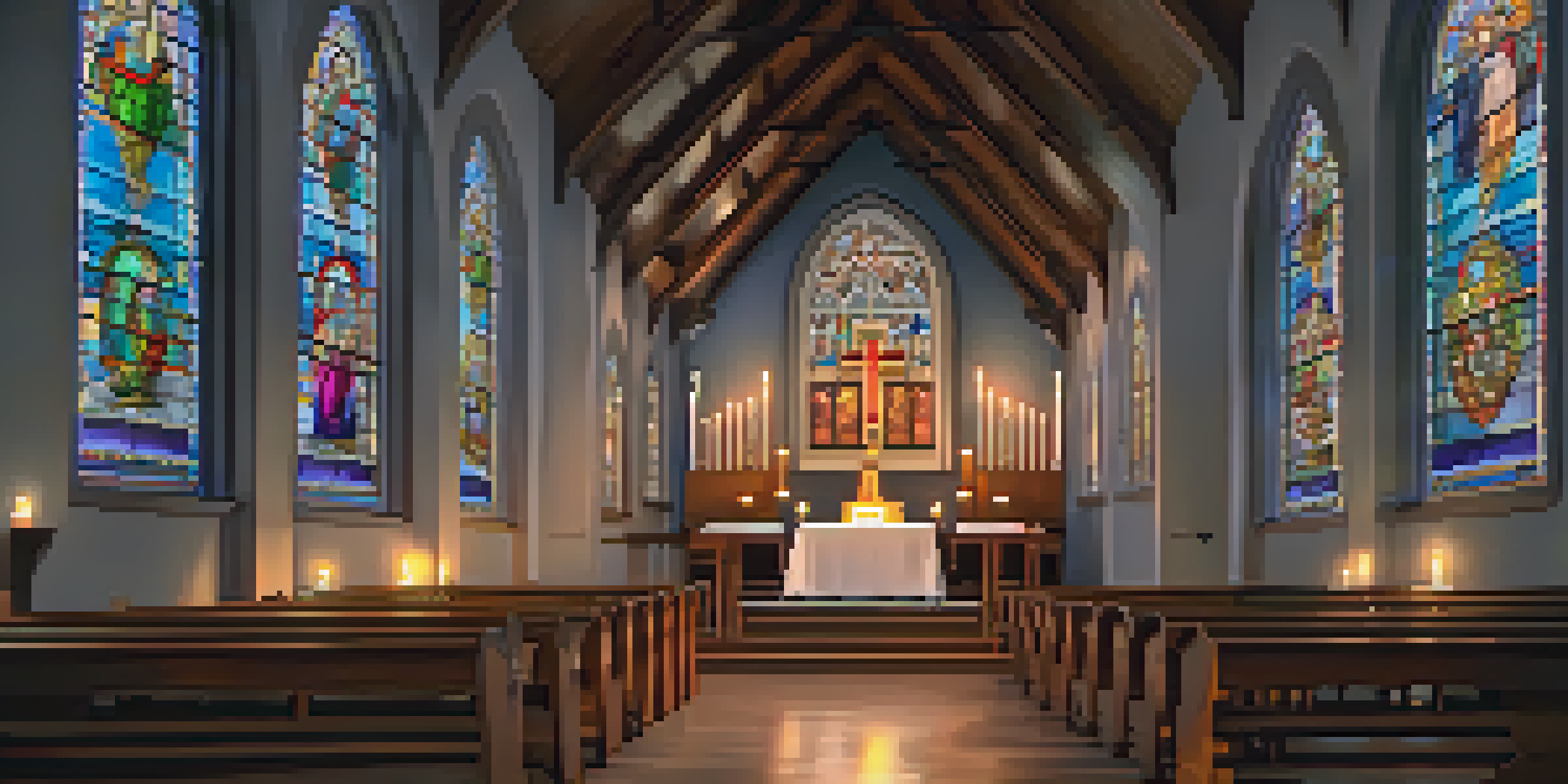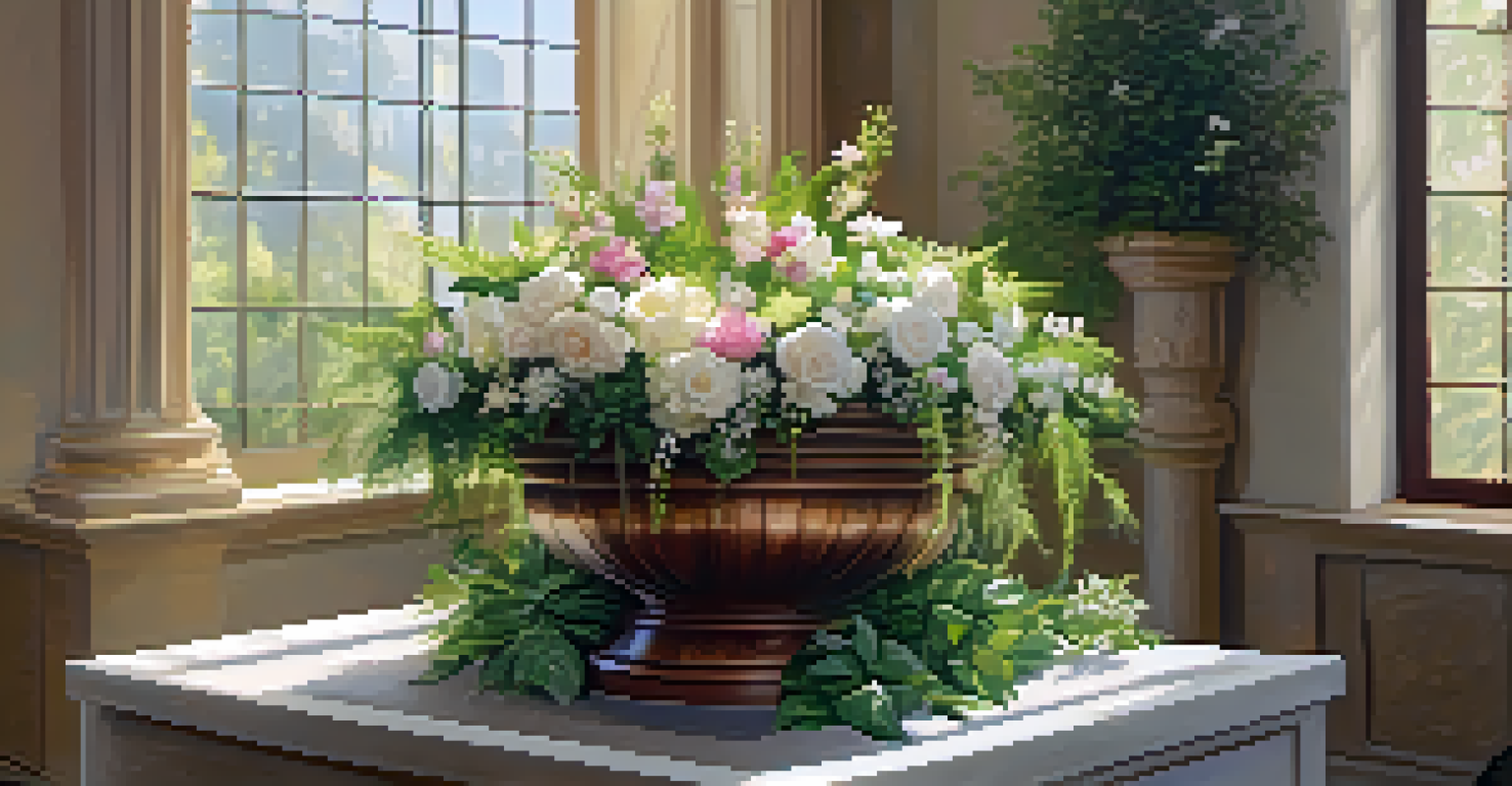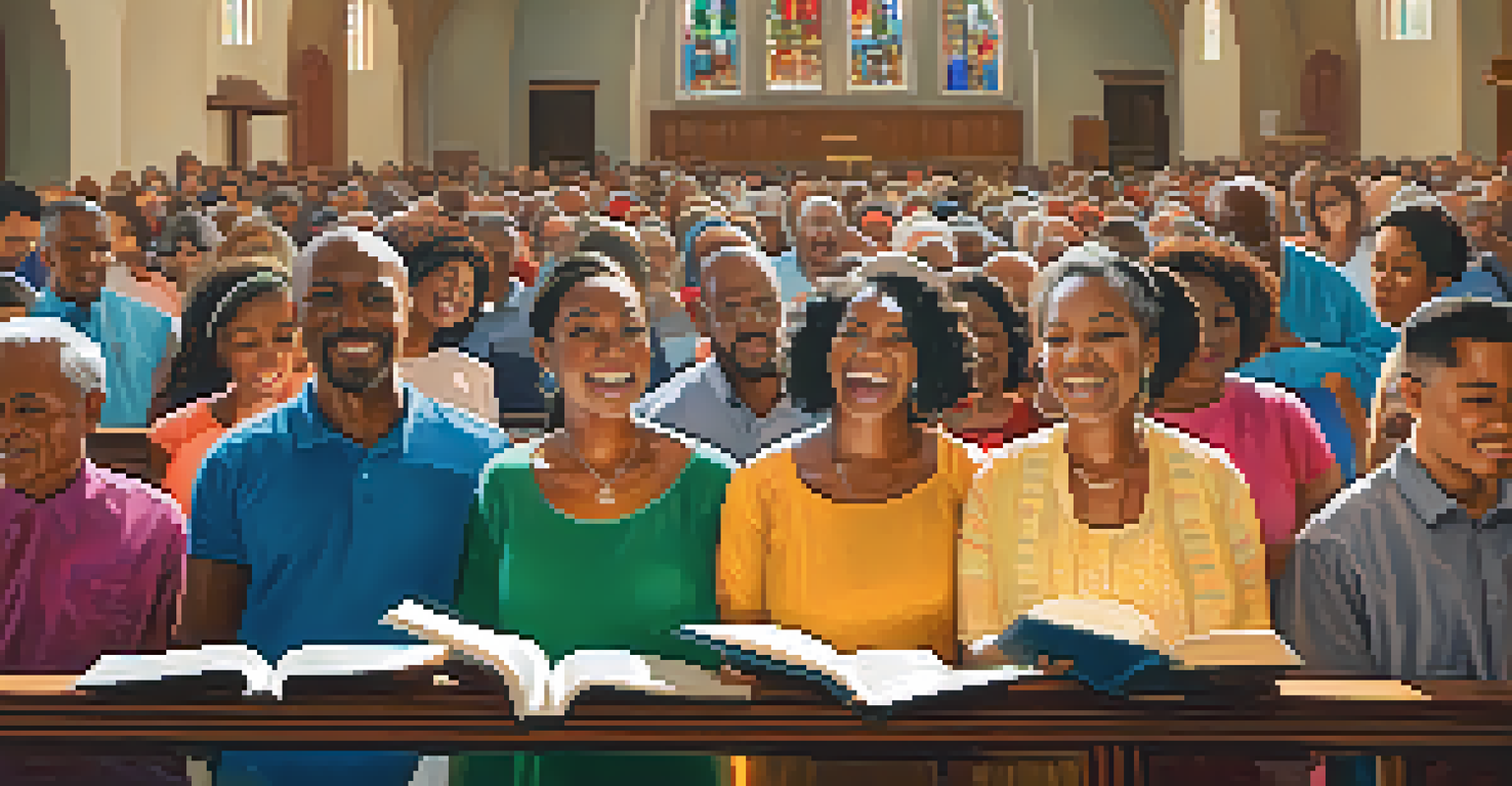The Role of Art in Christian Sacramental Rites

Understanding Sacramental Rites in Christianity
Sacramental rites are essential rituals in Christianity, symbolizing the believer's relationship with God. These rites, such as baptism and communion, serve as outward signs of inward grace. They create sacred moments where the divine and the human intersect, reinforcing community and faith.
Art is the most beautiful of all lies; it is the truth of what is hidden behind the facade of everyday life.
Art plays a pivotal role in these rites, providing visual and sensory experiences that deepen spiritual engagement. From stained glass windows to altar paintings, artistic elements enhance the atmosphere and invite reflection. This connection between art and the sacred elevates the worship experience, making it more memorable.
Furthermore, the use of art in sacramental rites serves as a teaching tool, conveying theological concepts in an accessible manner. For instance, a baptismal font might symbolize new life and purification, helping congregants grasp these profound ideas. Thus, art becomes a bridge between doctrine and devotion.
The Impact of Visual Art in Worship Spaces
Visual art transforms worship spaces into environments that inspire reverence and contemplation. Churches often feature murals, sculptures, and icons that tell biblical stories and depict saints, inviting parishioners to engage with their faith visually. This ambiance fosters a sense of belonging and connection to the divine during sacramental rites.

Moreover, the colors, shapes, and arrangements of art can evoke specific emotions and spiritual responses. For example, warm colors may create feelings of joy and celebration, while cooler tones can inspire peace and reflection. This emotional resonance enhances the overall experience of the sacrament, making it more impactful for participants.
Art Enhances Sacramental Experience
Art transforms sacramental rites by creating immersive environments that deepen emotional and spiritual engagement.
Art also allows for personal interpretation and connection. Each individual may engage with the artistic elements differently, finding personal meaning in images that resonate with their own faith journey. This personal touch adds depth to communal rituals, emphasizing the diverse ways people experience spirituality.
The Role of Music in Sacramental Celebrations
Music is another vital aspect of art in Christian sacramental rites, enhancing the emotional and spiritual atmosphere. Hymns and liturgical chants often accompany rituals, creating a communal experience that unites worshippers in faith. The melodies and lyrics can evoke powerful feelings, deepening the participants' connection to the sacrament.
Music can change the world because it can change people.
Additionally, music has the ability to transcend language, allowing believers from diverse backgrounds to unite in worship. Whether it’s traditional hymns or contemporary worship songs, the universal language of music fosters inclusivity and shared experience. This communal aspect is particularly important during sacraments, where unity in faith is paramount.
Furthermore, the rhythm and tempo of music can guide the flow of the ritual, marking important moments within the sacrament. For instance, a solemn hymn might accompany the moment of communion, enhancing the gravitas of receiving the Eucharist. This thoughtful integration of music enriches the overall sacramental experience.
Symbolism in Art During Sacramental Rites
Art is rife with symbolism, which plays a significant role in sacramental rites. Each element—be it a candle, a cross, or a baptismal robe—carries meaning that transcends its physical form. For example, the candle symbolizes Christ as the light of the world, reminding believers of their call to shine in darkness during baptism.
These symbols help communicate complex theological ideas in a way that is relatable and immediate. For instance, the act of breaking bread during communion symbolizes Jesus' sacrifice, making his love and forgiveness tangible. This use of symbolism in art invites participants to reflect on their faith and the larger narrative of Christianity.
Symbolism Deepens Faith Understanding
Symbols in art communicate complex theological ideas, making them relatable and inviting deeper reflection among participants.
Moreover, incorporating symbols into rituals can make the experience more immersive. When congregants participate in these sacraments, they engage with the symbols on multiple levels—intellectually, emotionally, and spiritually. This multi-faceted approach deepens their understanding and appreciation of the rite.
Art's Role in Teaching and Catechesis
Art serves as an educational tool within the context of sacramental rites, especially for new believers and children. Visual representations of biblical stories and sacraments can help catechumens understand their faith more deeply. This integration of art encourages questions and discussions, fostering a richer learning environment.
For example, murals depicting the Last Supper can prompt conversations about communion and its significance. This dialogue helps participants connect the visual art with their spiritual journey, making the teachings of the Church more accessible. In this way, art is not just decorative; it is pedagogical.
Additionally, as congregants encounter art during sacramental rites, they are invited to reflect on their personal experiences of faith. This connection can inspire a lifelong commitment to learning about their beliefs. Thus, art becomes a vital companion in the faith journey, guiding individuals through their spiritual development.
Cultural Expressions of Art in Sacramental Rites
Art in Christian sacramental rites varies widely across different cultures, reflecting the diversity of the global Church. Each community brings its unique artistic traditions, infusing sacramental practices with local flavors and meanings. This cultural expression enriches the experience of the rite, making it relevant to the participants' lives.
For instance, in some cultures, baptism may involve elaborate ceremonial garments and ritual dances, while in others, it may be marked by quiet reflection and solemnity. These variations demonstrate how art can adapt to express the same core beliefs in different contexts. The beauty of this diversity lies in its ability to resonate with a wide array of believers.
Cultural Diversity Enriches Worship
The integration of local artistic traditions in sacramental rites reflects cultural diversity, enhancing personal connections to faith.
Moreover, incorporating local art forms into sacramental rites fosters a sense of ownership and pride among congregants. When art reflects their culture, it deepens the connection to their faith, making the sacraments feel more personal. This interplay between culture and spirituality highlights the universal yet unique nature of Christian worship.
The Future of Art in Christian Sacramental Rites
As society continues to evolve, so too does the role of art in Christian sacramental rites. Contemporary artists are exploring new mediums and expressions that resonate with modern congregants. This evolution invites fresh perspectives on traditional practices, ensuring that sacraments remain relevant and engaging.
Digital art, for example, is becoming increasingly popular in worship settings. Projections, virtual reality, and interactive installations can create dynamic experiences that captivate new generations. These innovations challenge us to reconsider how we understand and engage with sacraments, merging tradition with modernity.

Ultimately, the future of art in sacramental rites promises to be a blend of the old and the new, respecting heritage while embracing change. As we explore these new horizons, the core purpose remains the same: to draw believers closer to God and to enrich their spiritual lives through the transformative power of art.